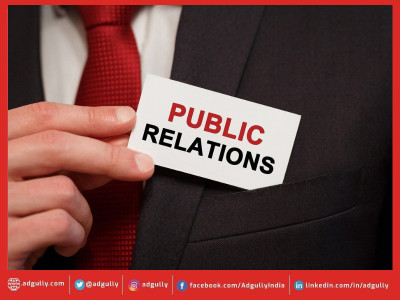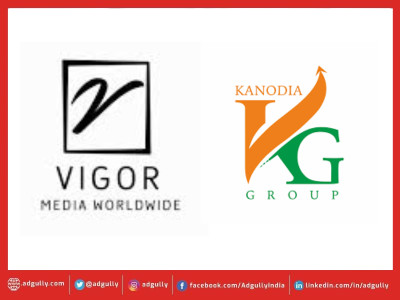@ the time of Covid19, what PR lacks?
By Devasis Chattopadhyay.
Still, when people-at-large i.e. the ‘Public’, ask me about my profession - as to what do I do for my living? And I answer that, I am a PR Professional. They mostly look at me quizzically. Not very sure of how to place my profession. You do Advertising? Sales? Marketing? Publicity? They ask back. Even evolved and experienced service-holders or businessmen, mostly, do not comprehend what PR is, and, what impact it could possibly create. In fact, during current pandemic I have come across a huge number of such examples.
Also read: How PR will change in the post COVID 19 world : Bhaskar Majumdar
Every time I face such situation, I start thinking of what does my profession lack?
Marketing and Advertising are perceived by everyone as directly tied to products and services of an organisation - sales, revenue, and profit. The three elements most dear to any management world over. Whereas, PR and Corporate Communications are perceived, in most enterprises, even today, as nice to have - overhead expenses. Perceived to be not directly tied to sales, revenue, and profit. Mostly dispensable while the organisation is going through a rough-patch or cost-cutting drive. That is exactly happening currently. PR budgets are getting slashed and consultancies are put on notice.
This is where the aberration starts creeping in.
The ‘centre-of-gravity’ for any organization is 'money'. The departments and functions that have the most impact on monies or Profit are the ones that are important. They are perceived as ‘Profit-Centres’. Though, in my opinion, PR plays a very important role within the gambit of money-making or profitability of any organisation but, we as PR Professionals have generally failed to elucidate the effectivity of our profession with demonstrated examples to the top management of the organisations. As a result, we are not perceived as one of the ‘Profit Centres’ but as a ‘Cost Centre’.
While ‘Marketing & Advertising’ with their various business-modelling and case studies have successfully placed themselves at the core of the ‘Brand Building’ activity of all organisations, we the PR professionals have repeatedly failed to encash, because of the absence of demonstrated ROI business-modelling, feasibility, as well as case-studies, that we contribute to the ‘core’ element of any organisation - ‘Reputation’. We have failed to convey that PR is THE ‘Tool’ for managing the ‘Reputation’ which directly impacts the stock price and there by the goodwill of the organisation.
What, advertising and marketing professionals have repeatedly done are to measure each and every impact of their creativity - through campaign measurement, audience research, focus-group-studies, soft-launch measurement…so on and so forth. And show the ROI they bring in on to the table. We, the PR Professionals, have successfully avoided doing that so far. Advertising folks, wearing their creative hats, claim that they can measure and evaluate results achieved from each of their campaigns. The Board of Directors love them because that brings in the element of certainty.
The pandemic has proven, the only way that PR can only claim its rightful space, a seat on the BOARD, is by driving initiatives that are critical to the success of the organization, with demonstrated abilities. With Social and Digital media becoming all encompassing. With the growth of ‘Civil-Society’, ‘Citizen-Reporters’ and, with all pervasive growth of ‘Public Opinion’, the time has come for PR / Corporate Communication to drive 'conversations' with the various stakeholders of an organisation, including the consumers, vigorously with demonstrated ability. This is only because PR has the wherewithal which the other ‘tools’ of ‘Communications’ do not have. The power of being able to bring in the ‘earned’ media instead of being ‘paying for the media to convey the message’ as well as influencing public opinion. We need to demonstrate and document that ability of ours.
Given below is an elaborate case study to reinforce that claim.
Case Study: Project Z - A Caring Separation / Organisation ABC*
Scenario: In the early months of winter, a couple of years ago, ABC decided to operate its leather garments manufacturing factory situated at a small town in one of India's provinces at a reduced capacity and, to close the loss making unit overtime, if the business situation did not improve due to various reasons including continuous deterioration in market conditions, non-supportive government policies, poor infrastructure and reduced export orders.
Objective: ABC asked the PR Consultancy to work on containing the negative media sentiment locally (at the place where the factory was situated) along with the state’s capital and in Mumbai, which is considered to be India’s financial capital and, where the company has its HQ, as a consequence of this decision as explained in the scenario. The basic purpose was to try and achieve a no-negative impact on ABC’s share price. Or, at the least to minimise the volatility. The overarching purpose was to project the image of being a ‘Caring’ organisation.
Research: The initial perception audit carried by the PR Consultancy among media (locally and in the state’s capital), and immediate non-media stakeholders of ABC revealed a latent disenchantment towards the organisation. This negative perception was accentuated as ABC, in the recent past, did not organise any media connect programme. As a result of it, the affiliation of the organisation with the local milieu was weak. Consequently, it was deduced by the PR Consultancy that the decision to operate the unit at a reduced capacity and, to possibly close the loss-making unit overtime, could adversely impact ABC’s organisational image and its share price.
Basis the findings, the following four-pillar strategy was developed:
1. Identify media & non-media stakeholders – In consultation with ABC, the PR Consultancy decided that the very first task at hand was to identify the active media publications where the factory was situated. Along with, identifying the non-media stakeholders like the local polity, labour unions and their political affiliations, local relevant administrative authorities and bureaucrats because the affirmative opinions of these stakeholders, jointly and severally, were important for the success of the entire communications programme and for positively influencing media sentiments.
2. Convey the organisational story – Conveying ABC’s story to all stakeholders was also key to the communication strategy. It was emphasised on the messaging that despite the economic and business challenges the company supported the factory and its workforce for over 2 decades.
3. Highlight the offer of a compensation package to the affected workers – It was decided that it was important for ABC to highlight its efforts of continuously engaging with all stakeholders to arrive at a mutually acceptable compensation package for the affected workforce.
4. To talk persuasively about the reskilling workshops organised for the affected work force – It was also decided that ABC should communicate endeavours undertaken for organising reskilling workshops for the affected workforce as a positive rub off on the brand.
Execution: Consequently, a calibrated communication strategy was rolled out targeting and connecting with key stakeholder groups.
As an immediate step, a crisis and communications advisory core team, available 24x7, comprising senior leadership of ABC and PR consultancy was formed, to monitor the developments at the factory / unit location primarily, and to watch out for any state-level or national crisis fall-out and also to engage with media and non-media stakeholders on a regular basis. The team comprised business and communications strategists, human resource specialists, experts on media relations and public advocacy experts.
The main focus was on local and regional media. Together with ABC the PR Consultancy reached out to over 35 media publications in print, online and electronic. Borrowing a phrase from sports, the engagement was - ‘man-to-man marking’ - tapping every journalist, who wrote on the organization and the brand.
The core team conducted a media messaging and media training workshop for the senior management personnel of ABC at the factory location including creating FAQ document, scenario planning, media protocol etc. so that at any given point of time the spokespeople can communicate ABC’s story effectively to the media. Furthermore, daily tracking of print, online and electronic media was activated to keep track of and to take appropriate action, if need be, on the views expressed in the media and also to proactively deliver messages when necessary.
PR Consultancy representatives set up interactions with all the media editors and non-media stakeholders. The idea was to showcase the economic challenges faced by ABC in keeping the unit operational for nearly over 2 decades, its commitment to support the affected workers and its efforts to arrive at a mutually acceptable compensation package through dialogue with all stakeholders. Periodic press announcements were made to the media to make them aware of the developments proactively.
The targeted and focused engagement with media and non-media stakeholders paid off and when the severance / compensation package was announced by ABC it was well-received by the workforce and consequently by other stakeholders including the media. It was effectively communicated that ABC paid the work force a compensation package that was more than what was statutorily stipulated.
A structured and calibrated PR programme with all stakeholders lead to the peaceful closure of the factory. It was seen as a caring separation for over 1000 workforce the unit had. As was planned, after the compensation package was disbursed, the affected workers were directed to various Non-Governmental Organisations (NGOs) locally, to receive re-skilling orientation programmes. The interested members of the workers received reskilling training at the cost provided by ABC to the NGOs. The workers benefited from the reskilling workshops. Local media wrote about it, too.
In Mumbai or in the state’s capital, there were no media reports discussing the closure. Locally, at the factory site, though the media was apprehensive about the law and order situation and the economic impact of the separation, but they understood the business compulsion of ABC and respected that.
ABC’s share price never got impacted negatively, because of this closure and the separations.
Devasis Chattopadhyay is a PR professional, a columnist, and an author.


















Share
Facebook
YouTube
Tweet
Twitter
LinkedIn